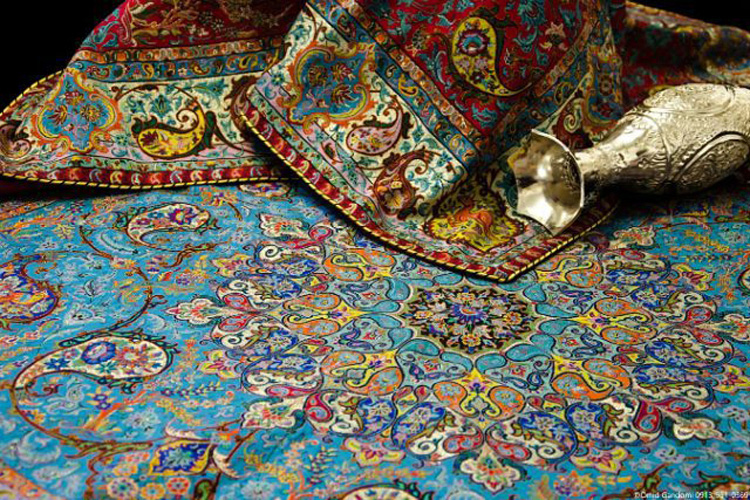Textiles
TERMEH
TERMEH
Termeh is a precious fabric woven from very fine fibers, which is one of the exquisite textile handicrafts of Iran. The word Termeh is an Indian word meaning a cypress tree with a curved tip, the reason for the existence of a curved cypress in Termeh motifs is considered by some to be humility and obedience to the divine greatness and creation of the universe. Termeh is woven with a variety of designs in different parts of Iran and Yazdi Termeh is very famous for its beauty.

OUR TEXTILE PRODUCTS
Termeh
full communication facilities provides services to companies operating in Iran and international businesses
Termeh is a precious fabric woven from very fine fibers, which is one of the exquisite textile handicrafts of Iran. The word Termeh is an Indian word meaning a cypress tree with a curved tip, the reason for the existence of a curved cypress in Termeh motifs is considered by some to be humility and obedience to the divine greatness and creation of the universe. Termeh is woven with a variety of designs in different parts of Iran and Yazdi Termeh is very famous for its beauty. For weaving Termeh, high quality silk and wool with long fibers are used. The yarns are dyed mostly with jujube, red, green, orange and black colors which are organic colors. Some of the various patterns of weaving Termeh are bote jeghe, Shah Abbasi flowers, Bote Khergheh, Shakh-e Ghavazni (deer antler), Amiri, Striped (Mahramat), Bote Sarvi (cypress) and Bote Badami (almond bush).
The beginning of weaving Termeh in Iran dates back to the early Safavid period and It is almost four hundred years old. Meanwhile, some believe that the original birthplace of Termeh is the heart of Central Asia and the Kashmir highlands. Some also believe that weaving Termeh started in Iran and then spread to Kashmir. What can be boldly said about this very delicate fabric is that the taste and initiative of Iranians in the delicacy of its texture, material and imaginative designs is unique in the world. This art reached its peak of prosperity and development during the reign of Shah Abbas Safavid, which became world famous and one of Iran’s export products.
In the past, Termeh patterns were made by finger method, but today, a quadruple machine (used for traditional weaving and Sher Bafi) is used. Weaving Termeh, in its traditional form, is currently being done in Iran, in Hotak, Kerman, and in Yazd, as well as in the workshops of the General Directorate of Traditional Arts affiliated to the Cultural Heritage, Handicrafts and Tourism Organization of Iran.
Basically, Termeh has a favorable relative strength due to its unique texture, and due to the high density of its wefts is more durable than other types of fabrics. However, light and humidity are the biggest causes of Termeh paleness. Because its black parts are more sensitive to light and heat than other parts and absorb them easily. Moth is also one of the enemies of Termeh, and just as woolen fabrics are protected against moth, Termeh must be preserved, the most common method of which is the use of naphthalene. Since Termeh is usually associated with lining and fittings, washing Termeh with water can damage the product, and the high temperature of water and chemicals in detergents can also be harmful; Therefore, the only way to wash Termeh is dry-washing.

